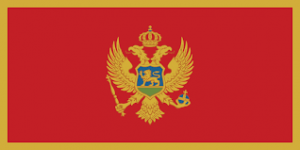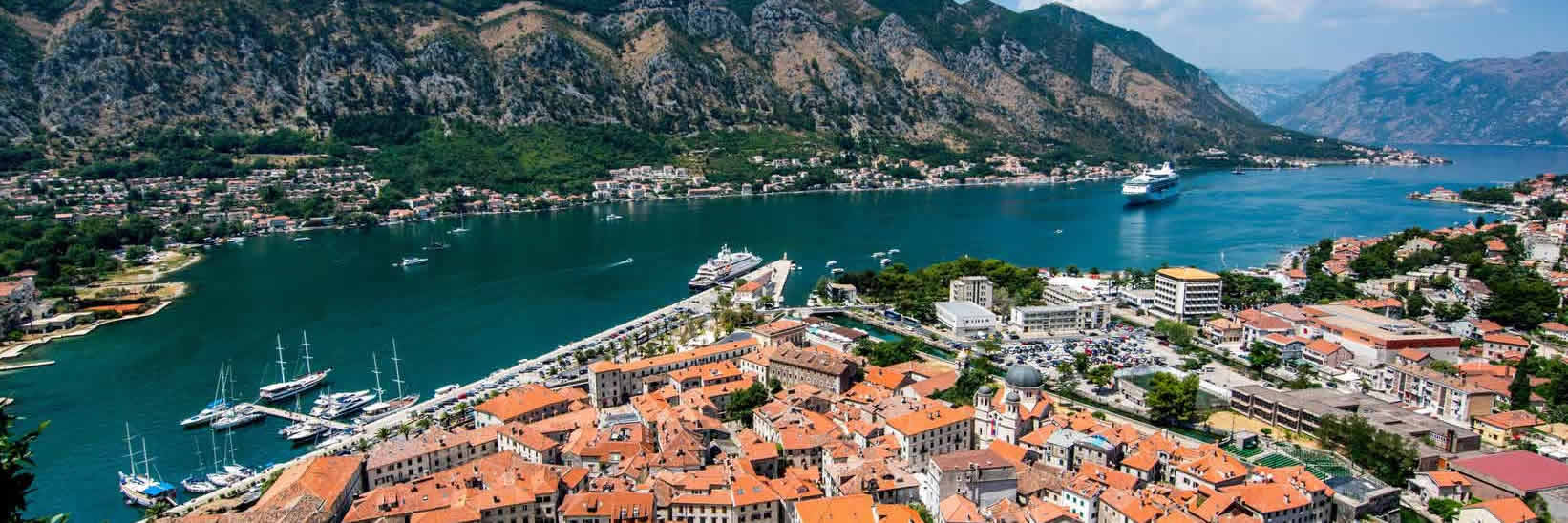Language/Serbian/Culture/Montenegro-Timeline
Jump to navigation
Jump to search
Rate this lesson:
Historical Timeline for Montenegro - A chronology of key events
Montenegro Timeline[edit | edit source]
| Date | Event |
|---|---|
| From 100,000 to 30,000 years BC | existence of a human presence in the Paleolithic period proven by traces of stonework found at the site of Crvena Stijena and in the Morača canyon. Neanderthal man is present in the Balkans. |
| From the 3rd millennium BC | the Illyrians of Indo-European origin settled in the Balkans and developed there a relatively homogeneous civilization on a territory stretching from the west of Slovenia to Epirus. |
| Antiquity | the existence of Illyrian tribes is attested by Greek and Roman writings. |
| In 335 BC. AD | Alexander the Great defeats the Illyrians. Beginning of colonization of the Illyrian coast by the Greeks. |
| 3rd century BC AD | reigns over Illyria of King Agron, then of his widow Queen Teuta. |
| 229 BC AD | landing of the Romans in Illyria to fight against acts of piracy carried out by the Illyrians. |
| 168 BC AD | disappearance of the last Illyrian kingdom, Illyria is a Roman province. |
| 2nd and 1st centuries BC. AD | Illyrian uprisings, however, not calling into question the authority of Rome. |
| Beginning of our era | the territory of Montenegro is part of Dalmatia, a strategic Roman province forming part of the Illyricum which covers the whole of the Balkans. |
| 285 | start of the reign of the Roman emperor Diocletian. He establishes the system of the tetrarchy in an attempt to control the vast empire. |
| 395 | the Theodosius line divides the Roman Empire in two, it starts vertically from the Montenegrin coast. The future historic center of Montenegro is in the Eastern Empire. |
| 476 | fall of the Western Empire under the invasions of the Germans. |
| 626 | the Avars are driven back to Illyria by the Byzantine emperor Heraclius. Byzantium favors the installation of Slavic populations (Croats and Serbs) to supplant the Avars. |
| 732 | withdrawal of the province of Dioclea from the supervision of the Bishop of Rome and placing under the authority of the Patriarch of Byzantium. |
| End of the 9th century | a Slavic tribal grouping was established in the form of the principality of Dioclea, itself part of the Serbian principality of Rascie. |
| 950 | Rascie is taken over by Byzantium, Dioclée remains independent. |
| End of the 10th - beginning of the 11th | King Saint-Jean Vladimir, supported by the Bulgarians, reigns over a vast territory including Diocles, Travonia and Serbia. |
| 1081-1101 | reign of Constantin Bodin son of Mihailo de Voislav, king of Dioclée. The dynasty crumbles and the preponderance over the Serbian world is taken by the Zeta to the detriment of the Diocles. |
| 1166 | Etienne Nemanja, who governs Rascie, frees himself from the tutelage of Byzantium. |
| 1189 | Etienne Nemanja annexed the principality of Zeta which remained Serbian until 1355. |
| 14th century | peak of the Nemanja dynasty with Etienne Douchan (1331-1355) who was appointed head of the empire of "Greater Serbia" which also covered Macedonia, Albania and Epirus. |
| 1389 | Battle of the Blackbird Field (Kosovo), Serbia becomes vassal of the Turks, the Zeta however remains independent. |
| 1453 | capture of Constantinople by the Turks, final fall of the Byzantine Empire. |
| 1479 | capture of Shkodra by the Turks, end of the principality of Zeta. |
| 1496 | end of the reign of the Crnojević refugees in Cetinje. The territory of Montenegro is placed under the official authority of the Sultan. |
| 1516 | Prince George V of Montenegro abdicates, he entrusts power to the Metropolitan of Montenegro; establishment of a theocracy (the so-called prince-bishops system). |
| 1696 | Prince-Bishop Danilo Petrović Niegoš succeeds in having the rule of transmission in the family accepted via the nephew. |
| 1711 | Prince-Bishop Danilo I establishes relations with the Orthodox Russia of Peter the Great. |
| 1799 | Prince-Bishop Peter (Petar) I succeeds in obtaining from Constantinople the recognition that the "Montenegrins were never subjects of the Sublime Porte". |
| 1815 | Congress of Vienna, Montenegro obtains an extension of its territory towards the north-east. However, it only covers a quarter of its current surface. |
| 1841 | Prince-Bishop Peter II fixes the borders of Montenegro with Austria without referring to the Turkish Empire. |
| 1852 | Danilo II succeeds, against the advice of the Turks, in securing the office of prince. He repulsed the attempted Turkish invasions of 1852 and 1853. |
| 1856 | the Treaty of Paris closes the Crimean War, Russia gives up expanding at the expense of Turkey. Napoleon III is opposed to Turkey's asserting its rights over Montenegro by sending a deterrent fleet off it. |
| 1858 | new attempt at Turkish invasion stopped at Grahovo. |
| 1859 | the borders of Montenegro are delimited by an international commission, extension of Montenegro to the north and the west. |
| 1878 | Treaty of San Stefano (March 3) closing the Russo-Turkish war. Even corrected by the Treaty of Berlin (July 13), it allows a strong expansion of Montenegro and gives it a first access to the sea (Bar). |
| 1881 | by the struggle against the Ottomans and the Albanians, Montenegro succeeds in extending on the coast in the direction of Shkodra and to gain a second port (Ulcinj). |
| 1905 | establishment of a Montenegrin parliament. |
| 1910 | abandonment of the name of principality for that of kingdom of Montenegro. |
| 1912-1913 | Balkan wars. |
| July 29, 1913 | the London conference recognizes a new state, Albania; Montenegro is forced to leave Shkodra to him. |
| August 10, 1913 | Treaty of Bucharest closing the Balkan wars. Montenegro extends over part of the sandjak of Novi Pazar and on the plain of Metohija. |
| June 28, 1914 | attack on Crown Prince François-Ferdinand and his wife. |
| August 8, 1914 | Montenegro in solidarity with Serbia declares war on Austria-Hungary. |
| January 8, 1916 | Austrian attack from Kotor. The coastal strip and Podgorica fall. |
| January 20, 1916 | the King of Montenegro leaves for Italy, the start of an exile which marks the end of the dynasty. |
| July 20, 1917 | Treaty of Corfu which lays the foundations for the regrouping of the South Slavs. |
| End of 1918 | the Montenegrin assembly resulting from the November elections decides the forfeiture of the Niegoš dynasty and the reunification of Montenegro with Serbia. Montenegro becomes part of the kingdom of Serbs, Croats and Slovenes of Peter the 1st king of Serb |
| 1921 | death of Nicolas I and abdication of his son Danilo which marks the end of the dynasty. The Constitution rules out the idea of a federal state for a unitary and Serbian state of which Alexander I (son of Peter I of Serbia) becomes king on August 16, 192 |
| October 1929 | adoption of the name of Kingdom of Yugoslavia. |
| April 6, 1941 | Yugoslavia is attacked by Axis troops. |
| April 18, 1941 | surrender and partition of the kingdom of Yugoslavia. Montenegro is placed under Italian governorate. |
| 1943 | Tito succeeds in being recognized by the Allies (Tehran conference). |
| November 29, 1943 | the Antifascist Council for the Liberation of Yugoslavia forms a provisional government entrusted to Tito, abolishes the monarchy and recognizes the federative form of the new state. |
| 1945 | proclamation of the Federal People's Republic of Yugoslavia. |
| May 4, 1980 | death of Tito. |
| May 1991 | Croatia and Slovenia declare their independence. |
| March 1992 | first referendum on keeping Montenegro in Yugoslavia. 96% of voters are in favor of keeping it in the federation. |
| February 4, 2003 | dissolution of Yugoslavia, the new federal state intended to replace it takes the name of the common state of Serbia and Montenegro. |
| May 21, 2006 | new referendum on the independence of Montenegro. 55.5% of the votes are in favor of independence. |
| June 3, 2006 | the Parliament of Montenegro proclaims independence. |
| October 10, 2007 | the new constitution is adopted. |
| January 31, 2008 | historic leader Milo Đukanović is reappointed as Prime Minister. |
| April 6, 2008 | Filip Vujanović is re-elected president. |
| December 15, 2008 | Prime Minister Milo Đukanović submits his country's candidacy for the European Union to President Sarkozy, then President in office of the European Council. |
| March 29, 2009 | the legislative and municipal elections strengthen the predominant position of the Democratic Party of Socialists (DPS) led by Mr. Đukanović (48 seats out of 81). The opposition is mainly divided between three blocs: SNP (16 seats), NSD (8 seats), PZP (5 |
| June 2009 | The Stabilization and Association Agreement with the EU signed on October 15, 2007 is ratified by France. |
| November 30, 2009 | visa exemption for all citizens except for long stays and those wishing to work in the EU. |
| December 29, 2010 | Parliament approves the new government of Prime Minister Igor Luksic (34). |
| August 2011 | Germany wants to suspend negotiations with Montenegro on its accession to the EU for failure to respect press freedom. |
| November 1, 2012 | Montenegro and Qatar initialed in Podgorica an agreement on the elimination of double taxation and an agreement on the prevention of tax evasion with regard to income taxes. A prerequisite for the intensification of economic relations and cooperation betw |
| November 12, 2012 | Montenegro was admitted to the United Nations Human Rights Council for 2013-2015. This membership was supported by 182 member states. |
| December 4, 2012 | Milo Đukanović is re-elected 5th President of the Montenegrin government since Montenegro's independence in 2006. |
| March 14, 2013 | visit to Paris by Igor Lukšić (Deputy Prime Minister, Minister of Foreign Affairs and European Integration of Montenegro), interview with Laurent Fabius to take stock of bilateral relations, the regional situation, the candidatures of the Montenegro to th |
| April 7, 2013 | Montenegrin citizens were called to the polls to appoint their new president. In this second ballot since the proclamation of its independence from Serbia in 2006, they had the choice between two candidates: Filip Vujanović, outgoing president in office s |
| September 2015 | Opening of "intensive and targeted talks" with Podgorica. Montenegro continues to provide financial and operational support to NATO's Resolute Support mission in Afghanistan. |
| October 2016 | Đukanović's DPS (Democratic Socialist Party) leads the legislative elections. |
| December 2017 | Montenegro returns after several years of negotiations in the integrated structure of NATO. The country is still negotiating to join the European Union. |


